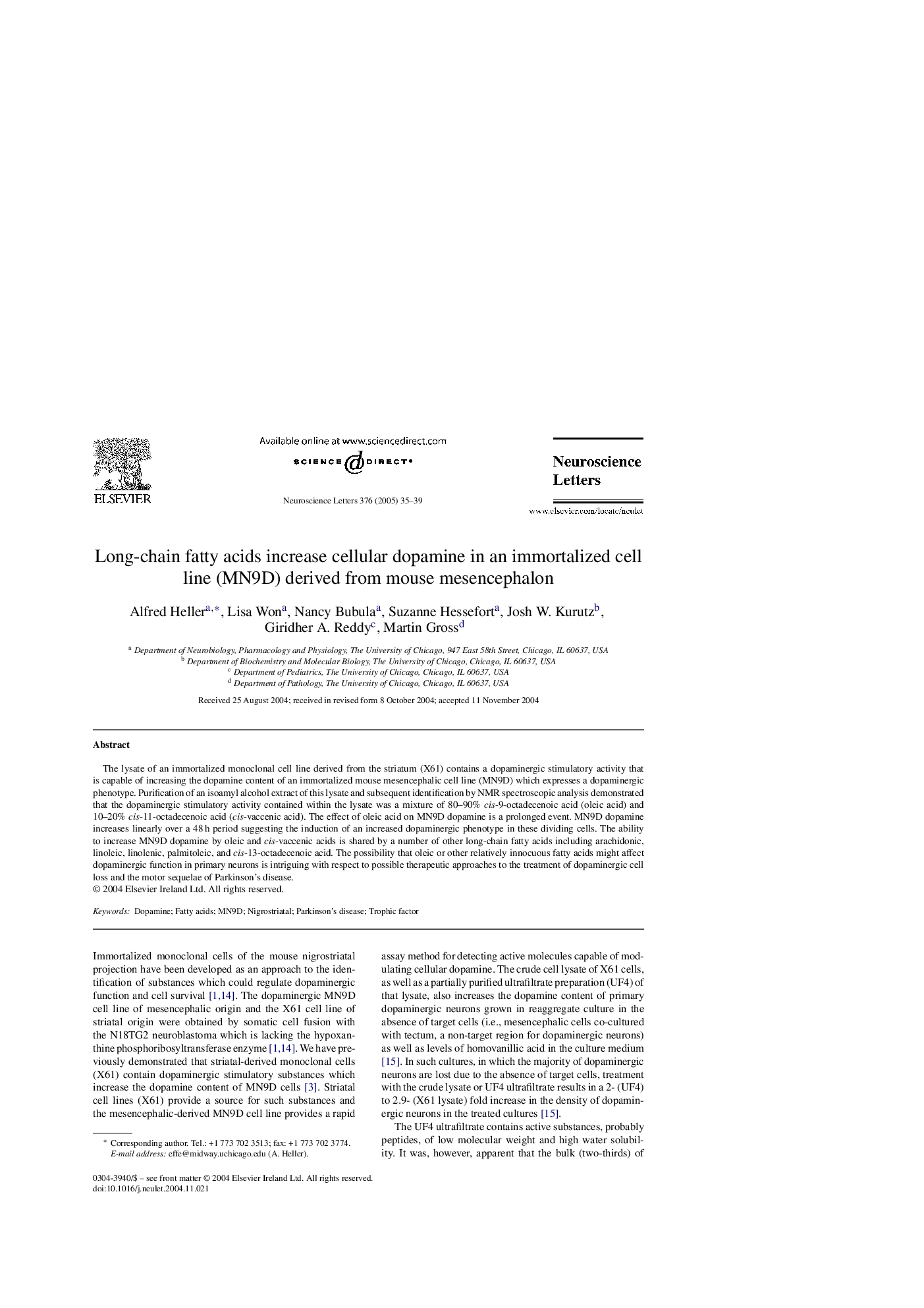| Article ID | Journal | Published Year | Pages | File Type |
|---|---|---|---|---|
| 9429574 | Neuroscience Letters | 2005 | 5 Pages |
Abstract
The lysate of an immortalized monoclonal cell line derived from the striatum (X61) contains a dopaminergic stimulatory activity that is capable of increasing the dopamine content of an immortalized mouse mesencephalic cell line (MN9D) which expresses a dopaminergic phenotype. Purification of an isoamyl alcohol extract of this lysate and subsequent identification by NMR spectroscopic analysis demonstrated that the dopaminergic stimulatory activity contained within the lysate was a mixture of 80-90% cis-9-octadecenoic acid (oleic acid) and 10-20% cis-11-octadecenoic acid (cis-vaccenic acid). The effect of oleic acid on MN9D dopamine is a prolonged event. MN9D dopamine increases linearly over a 48Â h period suggesting the induction of an increased dopaminergic phenotype in these dividing cells. The ability to increase MN9D dopamine by oleic and cis-vaccenic acids is shared by a number of other long-chain fatty acids including arachidonic, linoleic, linolenic, palmitoleic, and cis-13-octadecenoic acid. The possibility that oleic or other relatively innocuous fatty acids might affect dopaminergic function in primary neurons is intriguing with respect to possible therapeutic approaches to the treatment of dopaminergic cell loss and the motor sequelae of Parkinson's disease.
Related Topics
Life Sciences
Neuroscience
Neuroscience (General)
Authors
Alfred Heller, Lisa Won, Nancy Bubula, Suzanne Hessefort, Josh W. Kurutz, Giridher A. Reddy, Martin Gross,
